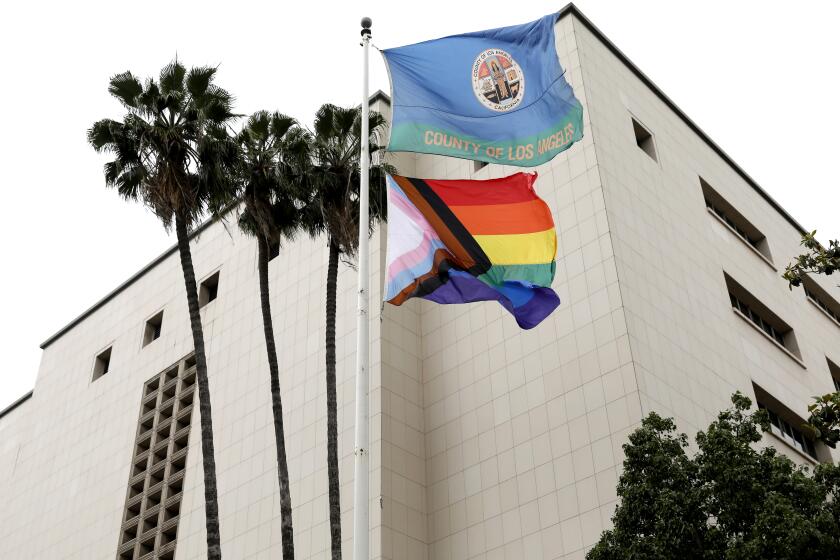Op-Ed: Nepal earthquake: We had been warned

- Share via
Images coming out of Nepal’s devastating earthquake on Saturday reminded me of another earthquake of similar magnitude that occurred 81 years ago. That earthquake of 1934, or nabbey salko bhuichalo, as it was referred to throughout my childhood in Katmandu, had acquired an air of a legend, delivered in black-and-white photos of men and women in traditional garb standing amid the rubble.
But the 1934 earthquake, which killed more than 10,000 people, was a thing of the past, recalled by old folks, resurrected only in history books and works of fiction. History came alive on Saturday at 5 a.m. when I opened my laptop to write, in Bloomington, Ind., and saw the news.
I awoke my wife, who through bleary eyes looked at me in disbelief as I told her, “This is a big one.” The next few hours were spent in frantic attempts to contact our loved ones in Katmandu; first and foremost my parents, whose old age makes them vulnerable, and my wife’s mother, a widow, who lives in a tall building.
For many Nepali expatriates, attachment to the homeland is fierce. I love America, but Nepal is my home —it’s a landscape I have returned to in all of my novels and short stories. And every year I return in person, with my MFA students. Last year we went up to the Himalayan region of Mustang, where my students bathed in the icy cold water from the 108 springs around Muktinath Temple, situated at 12,000 feet. Throughout the trip I was moved by Nepal’s beauty and moved even more by the kindness of the Nepalis we encountered, from the old grandma who served us food at Hotel Bob Marley in Muktinath, to the hotel owner in the resort town of Pokhara who went out of his way to arrange transport for us.
That such calamity would befall such generous people is heart-rending. The initial quake on Saturday has been followed by countless aftershocks that have everyone panicked. Reports are coming in of entire villages laid waste in the mountains. My parents, with whom communication has been difficult because of erratic phone connections and lack of electricity, are camped out in rain on a small field near their home on the outskirts of Katmandu. My mother-in-law is staying with one of her daughters.
We had been warned. In the early ‘90s, when I returned to live in Nepal for two years, the country experienced mild earthquakes. Articles appeared in newspapers claiming that a major earthquake was imminent. The reason: movement of tectonic plates in the Himalayas, the very process that created those mountain peaks of stunning beauty in the first place. Concerns were raised about lack of preparedness, especially with the alarming growth of shoddily constructed buildings. But these prophesies of a major trembler didn’t come true. I was among those who thought the experts were exaggerating.
Now this. Thousands have lost their lives, many more have lost their homes, and centuries-old temples, prized for their exquisite carvings in Katmandu Valley’s old palace squares, have been destroyed. Katmandu Durbar Square is in ruins. Patan Durbar Square has been devastated. These were World Heritage sites so, in a very literal sense, the whole world has lost physical access to its cultural history.
Last year my students took photos of erotic carvings in the Jagan Narayan Temple in Patan Durbar Square for Indiana University’s Alfred Kinsey Institute. That temple is now gone. In 2010 we climbed the Dharahara tower in central Katmandu for a panoramic view of this chaotic yet vibrant city. The tower, whose original structure dates to 1832, had collapsed in 1934 and was rebuilt. At the top I remember — now with horror — telling my students that the monument was vulnerable to another collapse because Nepal was so earthquake prone. On Saturday, Dharahara was reduced to a stump.
Nepalis, most of whom are Hindus and Buddhists, are well attuned to the idea that nothing is permanent. The champion of impermanence, Siddhartha Gautama Buddha, was born in Nepal. He also taught that life, by its very nature, is filled with suffering.
We Nepalis know suffering. We survived a century-long Rana oligarchy that had most of the country in rags, and the decades-long repressive Panchayat system that kept power in the hands of the king and the caste elites. The 1990 pro-democracy movement ushered in a constitutional monarchy — and then a civil war left thousands dead. Petty politicians have stymied efforts to make a new constitution.
But my people are also resilient. Already Nepalis are uniting to deal with this most recent tragedy. They are digging through the rubble for survivors.
“Feeling helpless,” my wife wrote on her Facebook page. When we have managed to connect, it’s our loved ones in Nepal who have reassured us, rather than the other way around: “Don’t worry, we’re fine. It’ll be OK.”
Samrat Upadhyay’s novel “The City Son,” set in Katmandu, is a finalist for the PEN Open Book Award. For donations to Nepal, please visit globalgiving.org
Follow the Opinion section on Twitter @latimesopinion and Facebook
More to Read
A cure for the common opinion
Get thought-provoking perspectives with our weekly newsletter.
You may occasionally receive promotional content from the Los Angeles Times.









